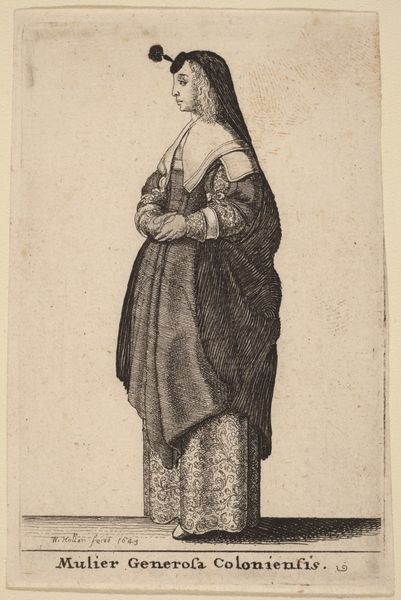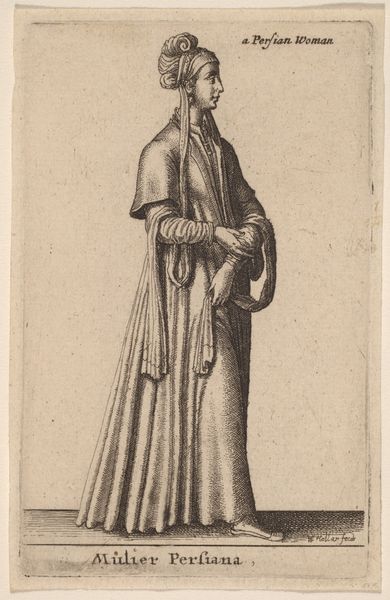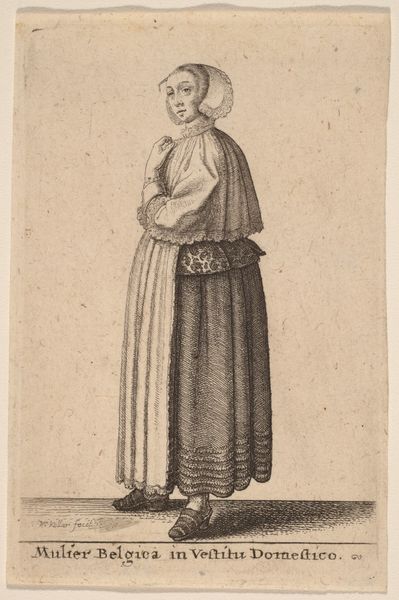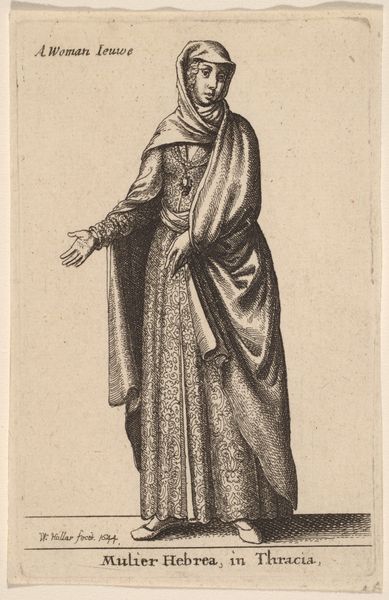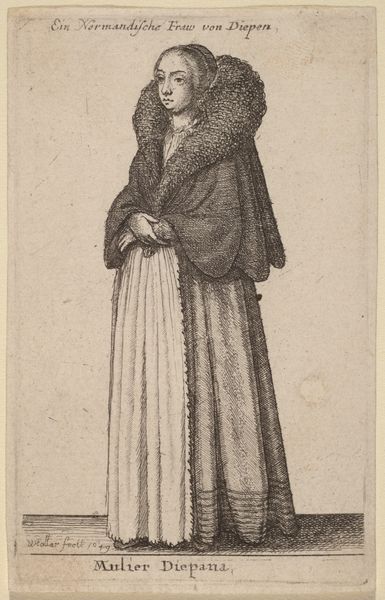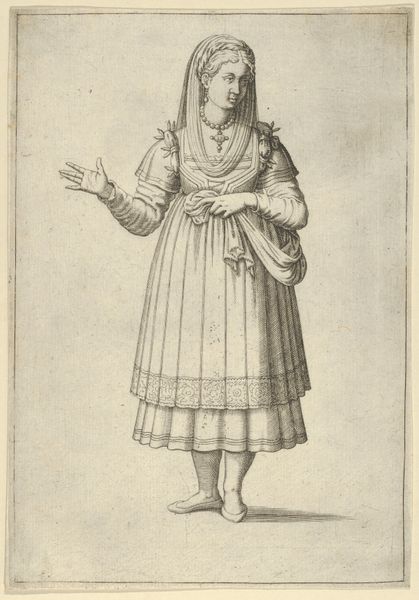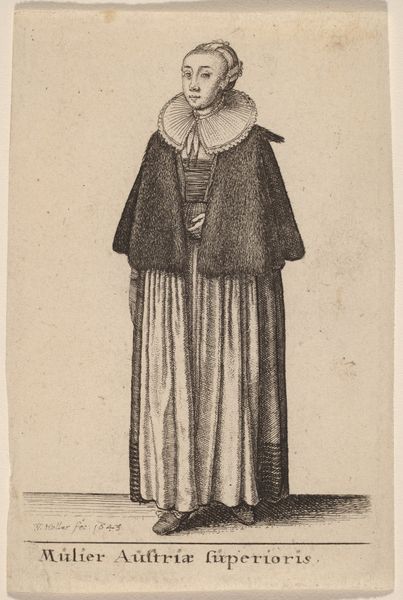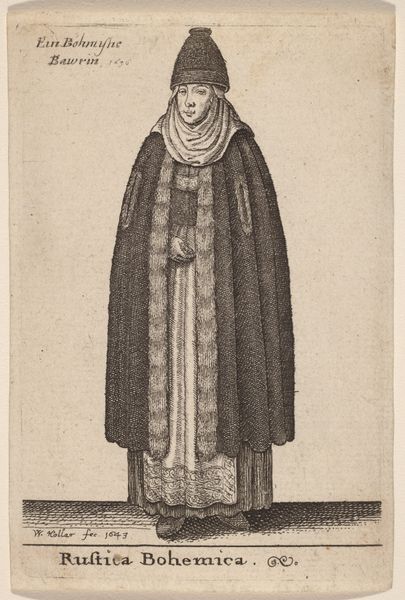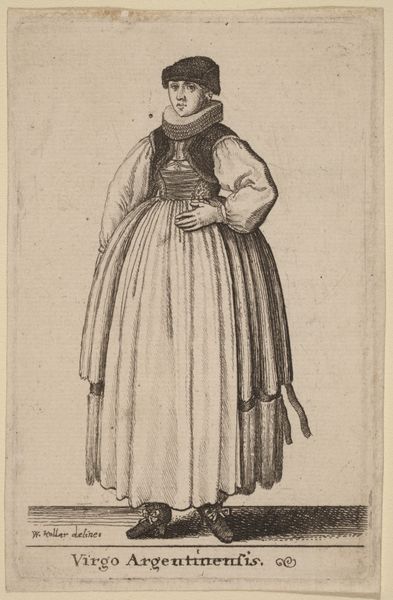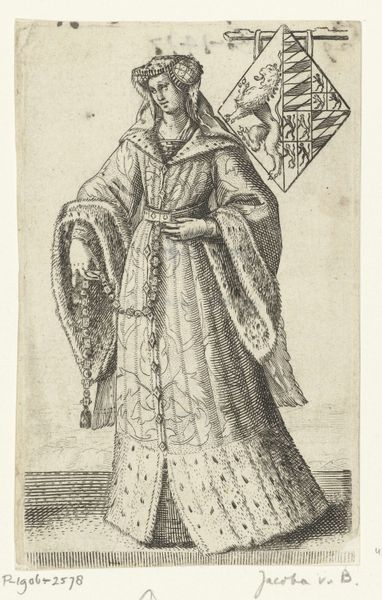
print, engraving
#
portrait
#
baroque
# print
#
genre-painting
#
engraving
Copyright: National Gallery of Art: CC0 1.0
Curator: The somber yet stately engraving before us, “Mulier Aulica Turca,” was crafted in 1644 by Wenceslaus Hollar. It portrays a Turkish court lady in elaborate attire. The entire image emanates formality through the careful depiction of the woman's detailed dress and posture. Editor: Immediately, I'm struck by the inherent power dynamics embedded within this depiction. The gaze isn’t inviting or familiar. It’s an image that broadcasts power structures within representations of cultural identity. This isn't just about fashion; it's about imperial gazes and representation. Curator: Absolutely. Her dress alone speaks volumes; its patterned fabric drapes beautifully to suggest wealth and status, emphasizing that the symbol extends into class difference too. Note also how the engraver meticulously captured these textural elements through linear patterns that invite us into her visual narrative. Editor: Precisely, but let’s consider how this fits into the historical context of the 17th century, specifically regarding European orientalism. How does her "Turkishness" play into constructions of "the Other"? Is this meant to be an ethnographic study, a fashion plate, or something else entirely? The subtle condescension is hard to miss. Curator: One cannot escape how these engravings served diverse functions at once. This portrayal isn’t merely about documentation but a negotiation of European perspectives on Ottoman culture through visual markers and attire which solidified ideas about the East within the collective memory. Even the choice of engraving preserves ideas to remain present beyond an oil painting or fresco that few would see, as print has an inherent democratic attribute and allows repetition. Editor: Which opens up an interesting debate about the nature of accessibility here. An engraving would certainly be cheaper to produce and thus more easily circulated, but who would have had access to it? Wealthy Europeans primarily, which reinforces this distance in status. It underscores how the circulation of images in itself served political and social goals. Curator: An important distinction, yes, that accessibility often caters towards reinforcement of existing societal power structures through representation itself rather than breaking such things down, something to ponder when we consider similar imagery across various media even today. Editor: Thinking about Hollar’s choices here pushes me to recognize both the artistry and the layers of meaning embedded in this print—not just about one Turkish woman, but as a cultural product loaded with sociopolitical weight. The detail really prompts us to dig into a much wider world than what is explicitly depicted.
Comments
No comments
Be the first to comment and join the conversation on the ultimate creative platform.
